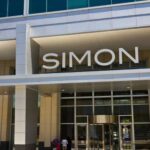Consumer tech and durables stabilize in 2023
A lot has changed since the start of 2023, when the macroeconomic outlook appeared uncertain: inflation is decelerating, interest rates may be near their apex, and there are signs of positive change on the horizon. The consumer tech and durables industry has remained resilient despite the difficult economic backdrop over the last three years, and now growth rates are stabilizing. Overall, the industry is operating at a slightly higher level compared to pre pandemic levels. But the environment remains challenging for consumers and retailers will need to use every available lever to continue to drive sales growth.

Promotions drive growth amid cost-of-living pressures
Over the last year, almost all consumers took at least one money saving measure in response to inflationary pressures. These measures ranged from cutting back on non-essential purchases to shifting to budget brands and contributed to a lull in consumer demand. Consumers are resisting impulse buys and carefully planning their purchases. Almost half of global consumers had postponed purchases until they could secure a lower price during promotional events. In fact, last year 30% of total sales revenue was generated during six promotional events.

Historically, promotional events have been an effective tool to drive sales – offering an extra push to consumers to make purchases, driving demand and winning over cost conscious consumers. Seasonal promotions, in particular, have been effective at enticing consumers who are considering a purchase. In 2023, the 618 shopping festival in China was able to uplift tech and durables sales revenue by 5% in the online channel compared to the previous year. Offline retailers reacted strongly to the event and were able to gain 10% revenue uplift compared to the same week’s performance in the previous year.
Similarly, in the EU5 group of countries, while consumer demand decelerated, the Prime Day shopping event was successful in enticing consumers to open their wallets. This event boosted the weekly sales revenue by 5% compared to last year, making this year’s Prime Day week the most successful ever, with a greater focus on small domestic appliances and telecom products. Consumers timed their purchases to buy high quality durable products during the promotion, triggering volume and value uplifts.

Promotions drive premiumization via larger price cuts
Although the average price of consumer tech and durables products is still higher than compared to pre pandemic levels, on a yearly basis, prices have dropped. This has been driven by retailers trying to clear their inventories by offering more discounts.
For example, during the EU5 Prime Day event, the sales volume share of products with a price cut of more than 20% was approximately six percentage points higher than the same week last year. Overall, 45% of units online were sold with more than a 15% price cut, especially in small domestic appliances (51%), IT (44%) and Telecom products (36%).

While premiumization across the whole year decelerated, during Prime Day week, the hunger for premium brands (with a price index of 150 and higher) returned with a 24% increase vs last year’s Prime Day week. This was especially the case for small domestic appliances, which saw the highest share of premium sales at 44%, followed by IT and Office products.
Consumers are clearly focusing on quality over quantity, and they want value for their money, especially in key categories. Brands and retailers should tailor their promotion strategies to meet these needs and drive increased margins. The main theme of promotions should be highlighting value to consumers.
Promotions are no longer only about price discounts
Consumers still desire products that enhance their lifestyles both inside and outside their homes. Innovative features that add real value, convenience or elevated performance for consumers, and standout ranges for retailers, are cutting through. Consumers are also more rational, and the ultimate impact of a promotion is no longer driven by price alone. As a result, the bar of success has been raised even higher for retailers trying to persuade consumers to make purchases.
So what can retailers learn from the key trends that drove growth during the prime day event this year? And how can they adapt their promotional techniques?
- Innovation: Products that offer convenience, are smart or automate tasks are popular when the use case is very clear to the consumers. This is especially amplified within small domestic appliances. For example, total sales volume of vacuum cleaners grew by 43% in France and deep fryers grew by 165% in Great Britain compared to last year’s Prime Day revenue. To tap into this, promotions should emphasize the benefits and use cases of products to stimulate sales.
- Seasonality/climate: Products that tackle the impact of climate change are increasingly in demand. Summers in Europe continue to be hot and dry, boosting the sales of air coolers, air conditioners and fans. In the EU5, during the Prime Day week, air conditioners were one of the top performing categories. For example, in Italy, air conditioners grew by 425% in the Prime Day week compared to the last 52 weeks’ average weekly revenue performance. Retailers should use data to identify and tap into the seasonal trends that will resonate in different regions, with challenges varying by geography.
- Nomadic lifestyle: Desire for a flexible lifestyle is gaining popularity with consumers. Products that enable them to work and communicate from anywhere are growing more than their stationary peers. For instance, headsets grew by 65% and media tablets grew by 33% in Germany during the Prime Day week this year compared to the last 52 weeks’ average revenue.
- Customer service and experience: If good deals are followed up by poor customer service, key promotional events could leave a bad impression in the mind of consumers, potentially damaging the retailer’s reputation. Meanwhile, as competition intensifies, differentiation is becoming increasingly important for retailers. Quality of service is highly valued by consumers, yet it is often overlooked. Research shows that consumers are more likely to return to a shop or purchase again from a retailer if they had a better experience, so investing in your customer experience is money well spent.
For example, Prime Day this year introduced ‘invite only deals’ for Prime members. Such exclusive deals or events often make a huge difference and create a unique position to capitalize on consumer loyalty. Consumers are often willing to pay a premium for products they cannot buy elsewhere, so adding an element of exclusivity can drive sales.
Consumers also prize convenient and quick service. Retailers can leverage this by offering the same level of service across all touchpoints with no differentiation in online or offline channels, a range of payment methods including installment options, or simply faster delivery and easier returns process.
Globally, key promotional events are likely to play a major role throughout 2023 as summer promotions demonstrate good success in stimulating consumer demand. To fully exploit these opportunities, retailers must understand the trends driving consumer behavior and adjust their promotions to leverage these trends.

![]()








